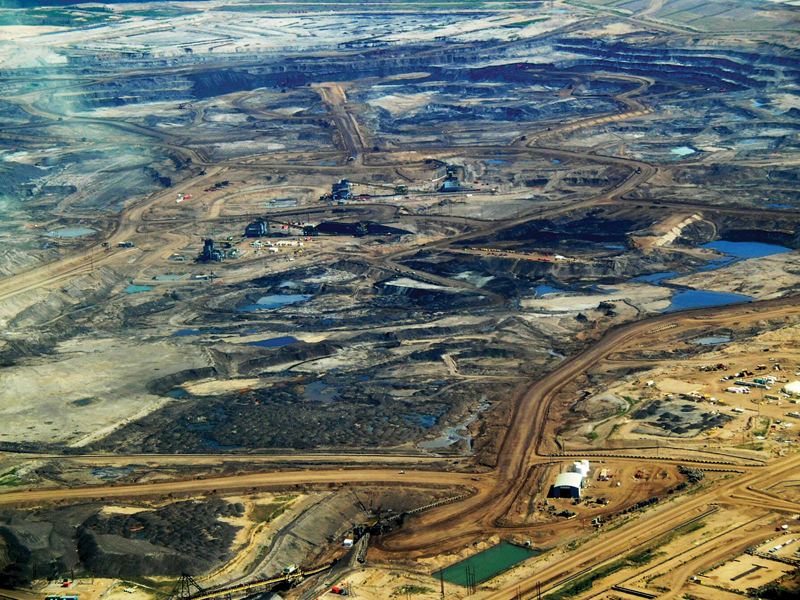CLIMATE CHANGE: New Report Criticizes Federal Environmental Efforts

On Oct. 7, 2014, the Commissioner of the Environment and Sustainable Development released a report on the federal government’s actions related to a number of environmental issues, including the reduction of GHG emissions, environmental monitoring of oil sands and the implementation of the Canadian Environmental Assessment Act (2012) to date. Its findings are critical of the federal government’s efforts in certain key areas. Here’s an overview of this report and the findings’and recommendations’of the Commissioner’s audit.
THE FALL 2014 REPORT
The Commissioner’s report is divided into six chapters, three of which address:
Mitigating Climate Change
The audit focused on the actions of three federal entities: Environment Canada, Natural Resources Canada and Transport Canada. It’s goal was to determine whether Environment Canada, working with others:
- Has made satisfactory progress in addressing four key issues from the 2012 audit: putting measures in place to reduce GHG emissions, assessing the success of these measures, working with the provinces and territories, and developing plans to achieve the 2020 Copenhagen Accord target; and
- Has used sound methods for estimating and reporting Canada’s future GHG emissions.
Overall, the audit found that federal departments have made unsatisfactory progress in each of the areas examined:
Working to reduce emissions. In 2012, the Commissioner concluded that the federal regulatory approach was unlikely to lead to emission reductions sufficient to meet the 2020 Copenhagen target. Two years later, the evidence is stronger that the growth in emissions won’t be reversed in time and that the target will be missed. Specifically, the report found that:
- Regulations to reduce emissions have been delayed and good practices haven’t been consistently followed;
- Departments aren’t yet assessing the success of current regulatory measures;
- Environment Canada isn’t coordinating with the provinces and territories to achieve the national target; and
- Environment Canada still doesn’t have a planning process for how the federal government will contribute to achieving the national target.
The report makes the following recommendations in this area:
- Environment Canada, with the support of Natural Resources Canada and Transport Canada, should publicly report the effects of the regulations currently in place to reduce GHG emissions, identify the lessons learned from measuring the effects of these regulations and apply these lessons to planned regulations to reduce GHG emissions;
- Given its commitment to be a world class regulator, Environment Canada should publish its plans for future regulations to reduce GHG emissions, such as the oil and gas regulations, with sufficient detail and lead time, so that consultations with interested and affected parties can be transparent and broadly based, and the parties can plan effectively; and
- Environment Canada, working with other federal departments and agencies, should put in place a planning process that includes the following elements:
- a quantitative description of what contribution the federal government will make to Canada’s 2020 target and to reducing emissions beyond 2020;
- a detailed description of what measures it’ll take to do its part in achieving the national target, including planned timelines;
- a regular review to assess progress and identify how plans will need to be adjusted, if necessary (this review should include the provinces and territories); and
- a regular report to Parliament so that Canadians understand what has been achieved and what remains to be done.
Estimating Canada’s future emissions. The recent audit found that Environment Canada has produced forecasts and reports regularly, voluntarily providing Canadians with information about energy use and GHG emissions, which are positive steps. Although the Department has generally used sound methods to estimate and report future emissions, it could improve these methods by enhancing its modelling capacity, continuing to strengthen its internal training, and providing greater consistency and detail in its predictions and reports.
The government needs to have a good understanding of the likely future level of GHG emissions so that it can respond appropriately. Its analysis also provides a basis for reports to Canadians and international parties, including the Emissions Trends reports and the National Communications and Biennial Reports required under the UN Framework Convention on Climate Change.
The report makes these recommendation in this area:
- To strengthen its quality controls and increase its transparency, Environment Canada should take steps to enhance external review of its climate change modelling framework and provide greater access to model inputs, assumptions and outputs, as well as details about the way policies are modelled; and
- Environment Canada, working with Natural Resources Canada, should improve the value to decision makers of its climate change reports by describing the key assumptions, separately indicating the impact of federal and provincial measures as far as possible, communicating the uncertainty associated with its estimates, and more appropriately and consistently describing the future emissions from Canada’s forests.
Environmental Monitoring of Oil Sands
In this area, the audit’s objective was to determine whether Environment Canada implemented its responsibilities under the Joint Canada’Alberta Implementation Plan for Oil Sands Monitoring (‘Joint Plan’) according to established timelines and budgets, and the objectives and approaches set out in the Joint Plan.
This audit focused on these areas:
Planning. Overall the audit found that, under the Joint Plan, work plans identified Environment Canada’s responsibilities and included budgets and timelines for deliverables. In light of the complexity and costs associated with establishing a comprehensive monitoring program for the oil sands, concrete work plans make it more likely that the program will achieve its objectives. But additional efforts are needed to meet commitments to engage stakeholders, including First Nations and Mtis, and incorporate Traditional Ecological Knowledge into the Department’s monitoring activities. Effective stakeholder engagement is also critical to the monitoring program’s relevance, credibility, implementation and operation.
Implementing monitoring projects. Environment Canada implemented most of the projects the audit examined according to established timelines. The audit also found that the Department is in the early stages of integrating monitoring results across air, water and biodiversity, which is important for understanding cumulative environmental effects of oil sands development.
Determining future roles. Although Environment Canada currently plays an important role in oil sands monitoring, its involvement in monitoring after March 31, 2015 isn’t clear. This finding is important because work remains to fully implement the Joint Plan. If Environment Canada is to fulfill its monitoring responsibilities under the Joint Plan, it’s important that the Department allocate the resources necessary to complete its remaining work
The report recommends that Environment Canada, in partnership with the Alberta Environmental Monitoring, Evaluation and Reporting Agency:
- Identify potential options to build on the foundation of the Joint Plan to have a world-class monitoring program past 2015, with due consideration for the extent and nature of the Department’s future involvement;
- Work with First Nations and Mtis communities to develop an engagement approach and to integrate Traditional Ecological Knowledge into the monitoring of oil sands;
- Develop a strategy for integrating monitoring data across air, water and biodiversity components; and
- Issue annual reports on progress in implementing the Joint Plan according to an established release schedule.
Implementation of the Canadian Environmental Assessment Act, 2012
The audit considered whether the Canadian Environmental Assessment Agency (‘Agency’), National Energy Board and Canadian Nuclear Safety Commission have put in place systems, practices and procedures to support effective environmental assessments under the Canadian Environmental Assessment Act, 2012 (CEAA 2012). Because CEAA 2012 is still in its early stages of implementation, the audit focused on key aspects that are relevant at this stage, including:
Identifying projects requiring environmental assessment. The Agency’s rationale for identification of projects for environmental assessment is unclear, specifically as to its:
- Recommendations to designate projects that may require an assessment;
- Process for supporting case-by-case designation of projects; and
- Screening process for determining which projects will undergo an assessment.
In addition, most of the Agency’s processes and the rationales on which recommendations are based aren’t made public. As the intent of the new law is to focus on projects that have the greatest potential for significant adverse environmental effects, it’s important for the Agency to have a clear, transparent basis for identifying those projects.
As a result, the audit recommends that the Agency:
- Develop criteria for recommending changes to the Regulations Designating Physical Activities to support future reviews;
- Develop a clear process and criteria to support its recommendations for the case-by-case designation of projects, which should be made public; and
- Clearly outline and explain how, in its screening process, various criteria and inputs are considered to support its screening decisions. This information should also be made public.
Cumulative effects assessment. The audit found that each of the three responsible authorities have developed or are developing some guidance for assessing cumulative effects. The Agency’s and Canadian Nuclear Safety Commission’s technical guidance is still in draft, while the National Energy Board still needs to put in place guidance for offshore drilling projects. So the report recommends that the National Energy Board further develop and update its cumulative effects guidance for projects regulated under the Canada Oil and Gas Operations Act and designated under the CEAA 2012.
The report also notes that CEAA 2012 has provisions for the carrying out of regional studies, an important step that, once completed will help in understanding the effects of multiple projects (existing and future) in a given region.
INSIDER SOURCE
2014 Fall Report of the Commissioner of the Environment and Sustainable Development, Oct. 7, 2014
